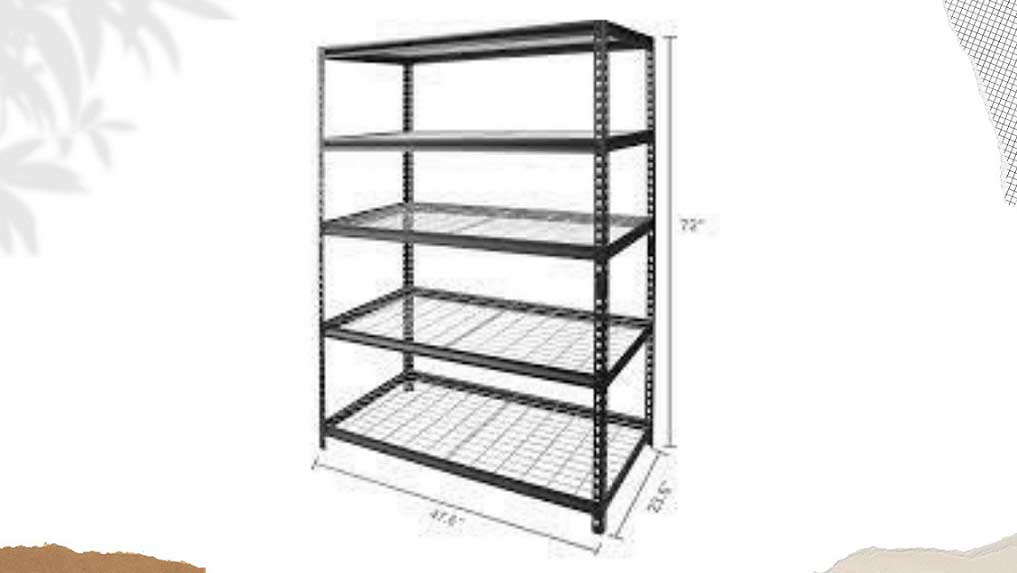If you are looking for a reliable storage solution that can handle heavy loads, then heavy-duty shelving is the way to go. Heavy-duty shelving is perfect for storing bulky and oversized items such as tools, equipment, and even raw materials. In this comprehensive guide, we’ll walk you through everything you need to know about heavy-duty shelving, from its features and benefits to the different types available in the market. Let’s get started!
Table of Contents
- What is Heavy Duty Shelving?
- Benefits of Heavy Duty Shelving
- Factors to Consider When Choosing Heavy Duty Shelving
- Different Types of Heavy Duty Shelving
- How to Choose the Right Heavy Duty Shelving for Your Needs
- Installation Tips for Heavy Duty Shelving
- Maintenance Tips for Heavy Duty Shelving
- Frequently Asked Questions (FAQs)
Table of Contents
What is Heavy Duty Shelving?
Heavy duty shelving, as the name implies, is designed to hold heavy items and withstand heavy loads. It is made from durable materials such as steel, wire mesh, or particleboard, and is often used in warehouses, factories, and other industrial settings where storage requirements are high.
Heavy duty shelving is available in various sizes, heights, and weight capacities, making it a versatile storage solution for a wide range of applications. It can be customized to suit your specific needs and is easy to assemble, disassemble, and reconfigure.
Benefits of Heavy Duty Shelving
1. Versatility: Heavy duty shelving can be used to store a wide range of items, from small parts to large machinery.
2. Durability: Heavy duty shelving is made from high-quality materials that can withstand heavy loads and resist wear and tear.
3. Customization: Heavy duty shelving can be customized to suit your specific needs, including height, width, and weight capacity.
4. Space-saving: Heavy duty shelving is designed to maximize storage space, making it ideal for crowded warehouses and factories.
5. Cost-effective: Heavy duty shelving is a cost-effective storage solution that can help you save money on storage costs.
Factors to Consider When Choosing Heavy Duty Shelving
Before choosing heavy duty shelving, there are several factors you need to consider, including:
Load capacity: You need to determine the maximum weight your shelves will need to hold and choose a heavy-duty shelving unit that can support that weight.
Size: The size of your shelving unit will depend on the available space you have for storage and the size of the items you need to store.
Material: Heavy duty shelving is available in different materials, including steel, wire mesh, and particleboard. Choose the material that best suits your needs.
Configuration: Heavy duty shelving can be configured in various ways, including single or double-sided units, freestanding units, and wall-mounted units.
Accessibility: You need to consider how easily you can access the items stored on your shelves. Choose a shelving unit that allows for easy access to your items.

Different Types of Heavy Duty Shelving
There are several types of heavy-duty shelving available in the market. Some of the most popular types include:
Boltless Shelving
Boltless shelving is a type of heavy-duty shelving that is easy to assemble without the need for bolts or nuts. It is available in various sizes and weight capacities and is often used in garages, basements, and workshops. Check More details about Boltless shelving.
Rivet Shelving
Rivet shelving is a type of heavy-duty shelving that uses rivets to hold the shelves in place. It is easy to assemble and disassemble, making it a popular choice for businesses that need to reconfigure their storage space frequently.
Suggested Shelving HOMEDANT 5-Tier Laminate Metal Shelving
Steel Shelving
Steel shelving is a type of heavy-duty shelving that is made from steel and is designed to withstand heavy loads. It is often used in warehouses and other industrial settings where storage requirements are high.
Suggested Shelving: Amazon Basics 5-Shelf Adjustable
Wire Shelving
Wire shelving is a type of heavy-duty shelving that is made from wire mesh. It is lightweight, easy to assemble, and provides excellent ventilation, making it ideal for storing items that need air circulation.
Suggested Shelving: FDW 48″L×18″W×82″H Wire Shelving
How to Choose the Right Heavy Duty Shelving for Your Needs
When choosing heavy duty shelving, it’s important to consider your specific needs and requirements. Here are some tips to help you choose the right heavy-duty shelving for your needs:
- Determine your storage requirements: You need to determine the size and weight of the items you need to store to choose a shelving unit that can accommodate your needs.
- Consider the available space: You need to consider the available space you have for storage and choose a shelving unit that can fit in that space.
- Choose the right material: Choose a shelving unit that is made from high-quality materials that can withstand heavy loads and resist wear and tear.
- Consider the configuration: Choose a shelving unit that is configured in a way that allows for easy access to your items.
- Choose a reputable supplier: Choose a supplier that offers high-quality heavy duty shelving that meets your needs.
Installation Tips for Heavy Duty Shelving
Installing heavy duty shelving can be a challenging task, but with the right tools and equipment, it can be done quickly and easily. Here are some installation tips for heavy duty shelving:
- Read the instructions carefully before beginning installation.
- Make sure you have all the necessary tools and equipment before you begin installation.
- Start by assembling the base unit, and then add the shelves.
- Use a level to ensure that your shelving unit is level and stable.
- Secure your shelving unit to the wall if necessary.
Maintenance Tips for Heavy Duty Shelving
To ensure that your heavy duty shelving lasts for years, you need to maintain it properly. Here are some maintenance tips for heavy duty shelving:
- Regularly inspect your shelving unit for signs of wear and tear.
- Clean your shelving unit regularly to prevent the buildup of dirt and debris.
- Tighten any loose bolts or nuts to ensure that your shelving unit remains stable.
- Replace any damaged or worn-out parts immediately.
- Avoid overloading your shelving unit to prevent damage to the shelves or the structure.
Frequently Asked Questions (FAQs)
What is the weight capacity of heavy duty shelving?
The weight capacity of heavy duty shelving can vary depending on the type of shelving unit you choose. Typically, heavy duty shelving can support between 500 to 1000 pounds per shelf.
What are the different types of heavy duty shelving?
The different types of heavy duty shelving include boltless shelving, rivet shelving, steel shelving, and wire shelving.
Can heavy duty shelving be customized?
Yes, heavy duty shelving can be customized to suit your specific needs, including height, width, and weight capacity.
How do I install heavy duty shelving?
Installing heavy duty shelving can be done quickly and easily with the right tools and equipment. You can follow the manufacturer’s instructions or hire a professional to install it for you.
How do I maintain my heavy duty shelving?
To maintain your heavy duty shelving, you need to inspect it regularly for signs of wear and tear, clean it regularly, tighten any loose bolts or nuts, replace any damaged or worn-out parts immediately, and avoid overloading it.
Also Read: Best Continuous Feed Garbage Disposal
Conclusion
Heavy duty shelving is a versatile storage solution that can handle heavy loads and withstand wear and tear. By considering your specific needs and requirements, you can choose the right heavy-duty shelving unit for your business or home. With the right installation and maintenance, your heavy duty shelving can last for years, providing you with an efficient and cost-effective storage solution.

Williams Kane is a blogger and writer. He’s passionate about writing and connecting with the community, especially when it comes to sharing his ideas through writing.
I am a versatile author with a passion for exploring a wide range of topics on our multi-niche website. With a background in research and a love for writing, I bring a unique blend of expertise to our platform.
My journey began in the world of science, where I earned a degree in biology and developed a deep fascination for the natural world. This background enables me to delve into topics related to ecology, environmental conservation, and the wonders of the animal kingdom.
However, my curiosity knows no bounds, and I have ventured into various other niches as well. From technology trends and digital innovations to health and wellness tips, I strive to provide well-researched and engaging content that informs and entertains our diverse audience.
Furthermore, my dedication to staying current with the latest developments in each niche ensures that our readers receive up-to-date and reliable information. Whether it’s deciphering complex scientific concepts or simplifying tech jargon, I take pride in making complex subjects accessible to all.
Join me on our multi-niche journey, where we explore the depths of knowledge and share insights on a multitude of topics to inspire, educate, and entertain.
